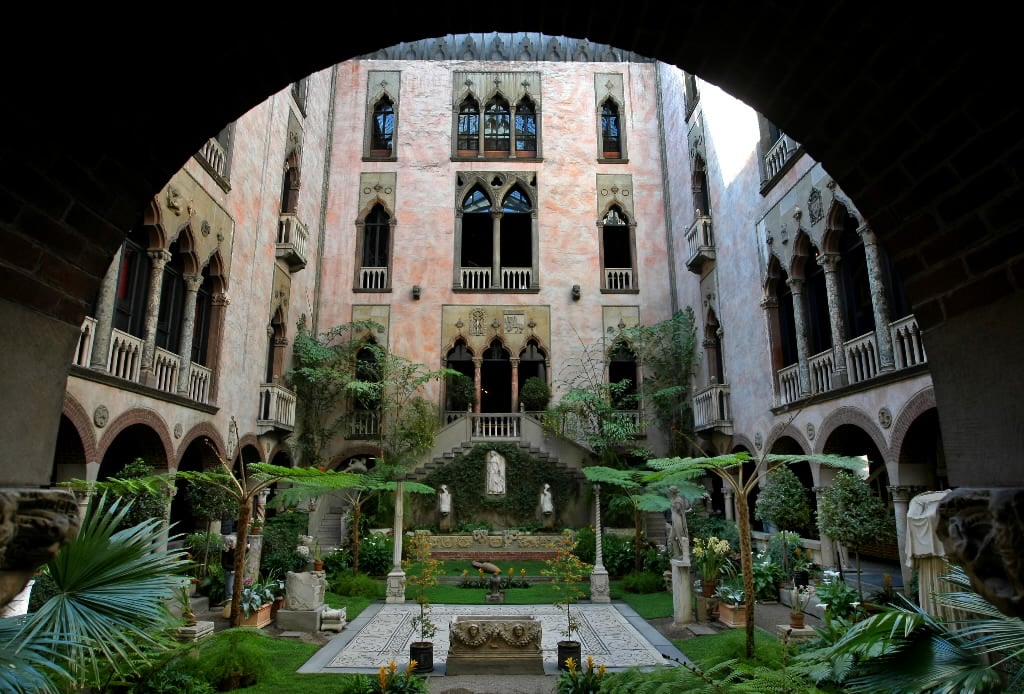
There’s no such thing as a deadline when it comes to solving a historic art heist. Just ask the Isabella Stewart Gardner Museum, which has officially extended its offer of a $10 million reward for information leading directly to the successful return of more than a dozen artworks stolen nearly three decades ago.
In the 1990 heist, thieves made off with more than $500 million in artworks, including Johannes Vermeer’s The Concert and Rembrandt’s Christ in the Storm on the Sea of Galilee (his only painted seascape) as well as five pieces by Edgar Degas and one by Édouard Manet. It remains the largest unsolved art theft to date, despite decades of investigation by the museum, the FBI, and the US Attorney’s office.
The reward, which was doubled to $10 million in May 2017, was set to revert to $5 million at midnight on December 31, 2017. The previous reward increase—to $5 million from $1 million—was made in 1997.
“There were so many calls and so much to do leading up to midnight on December 31,” said Anthony Amore, director of security at the museum, in an interview with artnet News. “I literally got my last call at two minutes to midnight. We didn’t stop and have discussions about extending the reward or ask, ‘What do we do on January 1?'”
Though the museum never officially rescinded or cut the reward—and the $10 million offer is still listed on the Gardner Museum website—the New York Times and the Boston Globe suggested that time was running out on the investigation.
The museum countered those perceptions by extending the reward deadline. The extension “demonstrates the commitment of the Museum and its Board of Trustees to the recovery of these important works,” said president Steve Kidder in a statement. “We are the only buyer for these works and they belong in their rightful home.”
Anthony Amore at the Isabella Stewart Gardner Museum in Boston, with empty frames left behind after the museum’s infamous 1990 theft. Photo courtesy of the Isabella Stewart Gardner Museum.
As for the theft itself, the details read like something out of a movie. On an early morning in March 1990, two thieves dressed as Boston police officers entered the museum and absconded with 13 priceless artworks. Nearly 30 years later, none of the artworks has been recovered and the thieves are still at large.
Tipsters have been invited to contact the museum by calling Amore directly or emailing a dedicated address. Amore says there was a spike in tips when the museum announced the reward increase in May. “Then things quieted down,” he says. “But when the press reports toward the end of the year started welling out, the calls just increased exponentially.”
So, did the end-of-year rush turn up anything promising?
“We did get a couple of calls that yielded information that warrants some further deep investigations,” Amore told artnet News, though he couldn’t add specifics due to the confidential nature of the investigation.
Gardner spokesperson Kathy Sharpless said museum leaders are more interested in the quality of the tips than the quantity. “We’re interested in that one nugget that could help move this forward,” she said.
Govaert Flinck’s Landscape with an Obelisk (1638). Image courtesy of Isabella Stewart Gardner Museum.
After a dozen years at the Gardner, Amore has become a seasoned arbiter of incoming information. “I can hear pretty quickly and discern where the call is going,” he says. “Because there wasn’t much time, I worked really hard to cut to the chase: Are you calling with facts? Are you calling with conjecture or theories?”
In March, the Gardner will release its first-ever book about the theft, titled Stolen. It’s designed to be a pictorial essay and guide to the 13 missing works of art.
“It’s important to indicate to the public that we remain dedicated to recovering the paintings,” says Amore. “We haven’t lessened our resolve. We were also heartened by how much outreach we received towards the end of the year and felt it prudent to keep the reward where it was.”